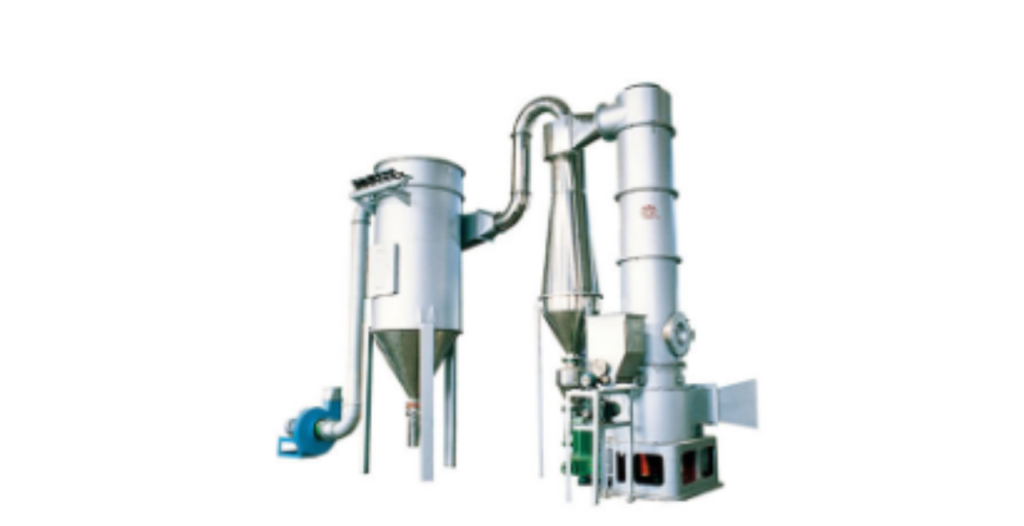DRYERS TECHNOLOGY & PRODUCTS
Flash Dryers
Flash dryers are industrial drying systems commonly used to remove moisture quickly from a wide range of materials (powders, granules & slurry-type materials).
They work on the principle of flash evaporation, where high-velocity hot air is rapidly introduced to the wet material, causing rapid moisture removal.
Below, I’ll provide more information about flash dryers, including their working principles, advantages, disadvantages, applications, materials of construction (MOC), and a summary:
Working Principles: The working principles of flash dryers involve several key steps:
Material Introduction: Wet or moist material is introduced into the dryer system, typically through a feed system.
High-Velocity Hot Air: High-temperature and high-velocity hot air or gas is introduced into the drying chamber through nozzles or air distribution systems.
Contact and Evaporation: The hot air comes into direct contact with the wet material. Due to the high temperature and rapid airflow, moisture within the material evaporates almost instantaneously.
Separation: The moisture-laden air, along with any fine particles or dust, is carried away from the drying chamber by an exhaust system.
Discharge: The dried material is discharged from the dryer once it reaches the desired moisture content.

Advantages:
Rapid Drying: Flash dryers are known for their ability to achieve rapid moisture removal, making them highly efficient in terms of energy consumption and throughput.
Compact Design: These dryers often have a compact footprint, making them suitable for installations with space constraints.
Uniform Drying: Flash dryers produce uniform and consistent dried material, which is essential for product quality.
Controlled Process: Operators can control temperature, humidity, and drying time to achieve precise drying results.
Versatility: They are suitable for a wide range of materials, including heat-sensitive and thermally stable products.
Disadvantages:
High Initial Cost: The equipment and installation costs of flash dryers can be relatively high.
Maintenance: Maintenance requirements can be significant, especially for larger and more complex systems.
Dust Emission: Fine particles and dust generated during drying may require specialized dust collection systems

- Food Industry: Drying food products like starch, spices, and milk powders.
- Pharmaceuticals: Drying pharmaceutical intermediates and active ingredients.
- Chemical Processing: Drying chemicals, including polymers, pigments, and catalysts.
- Mineral Processing: Drying minerals and ores before further processing.
- Environmental Remediation: Drying sludges and waste materials.
- Biomass and Bioenergy: Drying biomass materials for use in bioenergy production.
Materials of Construction (MOC): The choice of materials for flash dryers depends on the specific application and the materials being processed. Common materials of construction include:
- Stainless Steel: Used for its corrosion resistance and cleanliness in pharmaceutical and food applications.
- Carbon Steel: Suitable for many industrial applications.
- Specialized Alloys: Used in high-temperature or corrosive environments.

Summary: Flash dryers are highly efficient industrial drying systems known for their rapid moisture removal capabilities.
They operate based on the principle of flash evaporation, where high-velocity hot air rapidly evaporates moisture from materials. Advantages include rapid drying, compact design, uniform drying, versatility, and controlled drying processes.
However, they can be expensive to purchase and maintain. Flash dryers find applications in diverse industries, including food, pharmaceuticals, chemicals, minerals, and environmental remediation, with materials of construction selected based on specific application requirements.


 Sales & Marketing:
Sales & Marketing:  Service Supports:
Service Supports:  Website:
Website: 